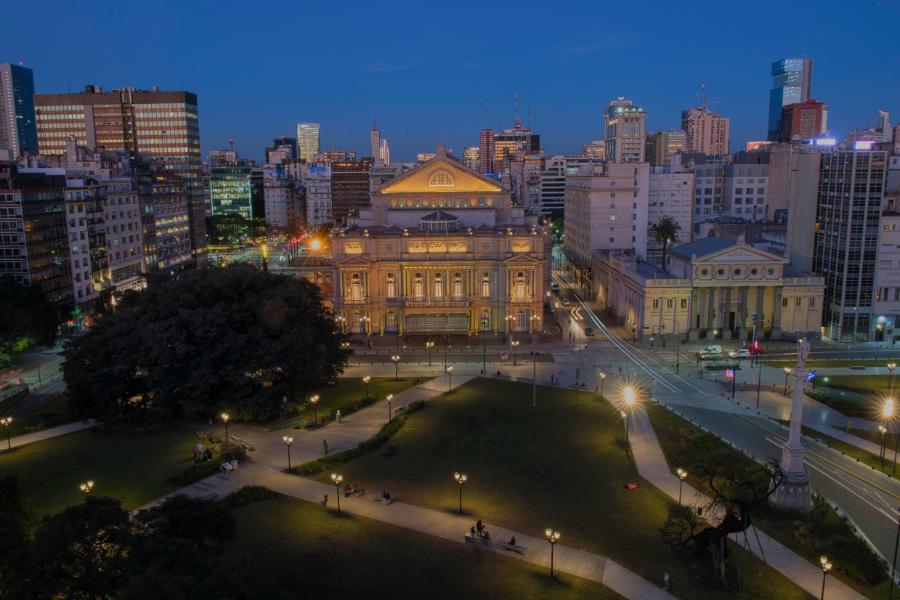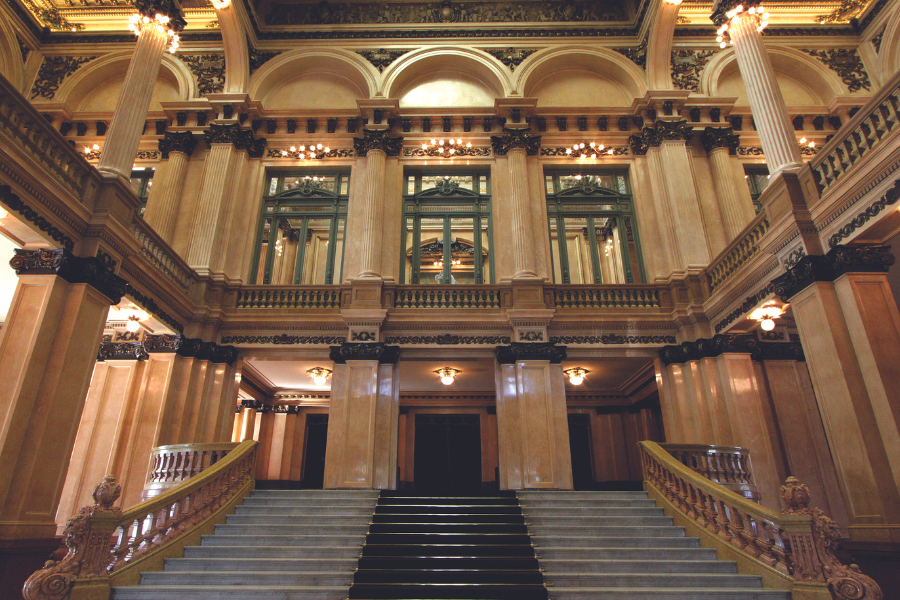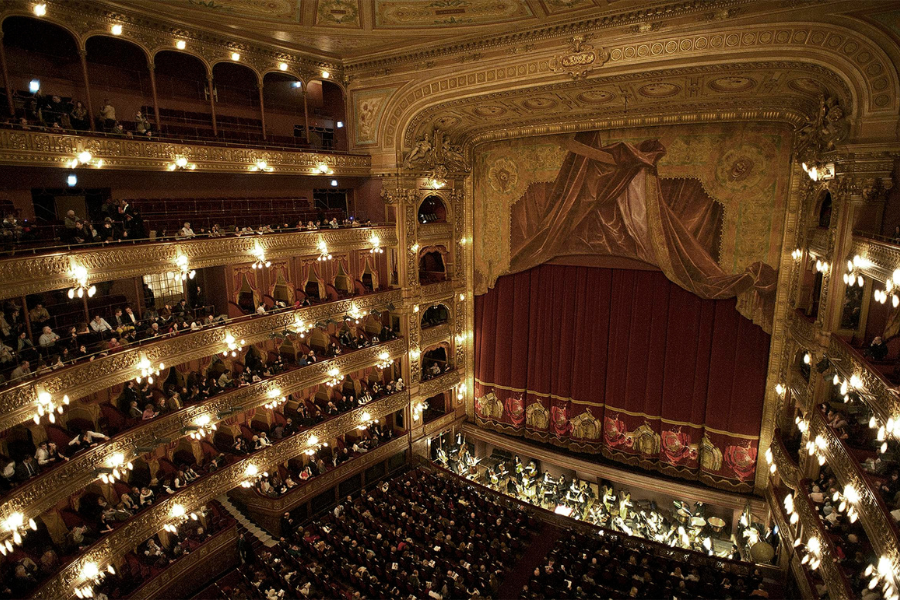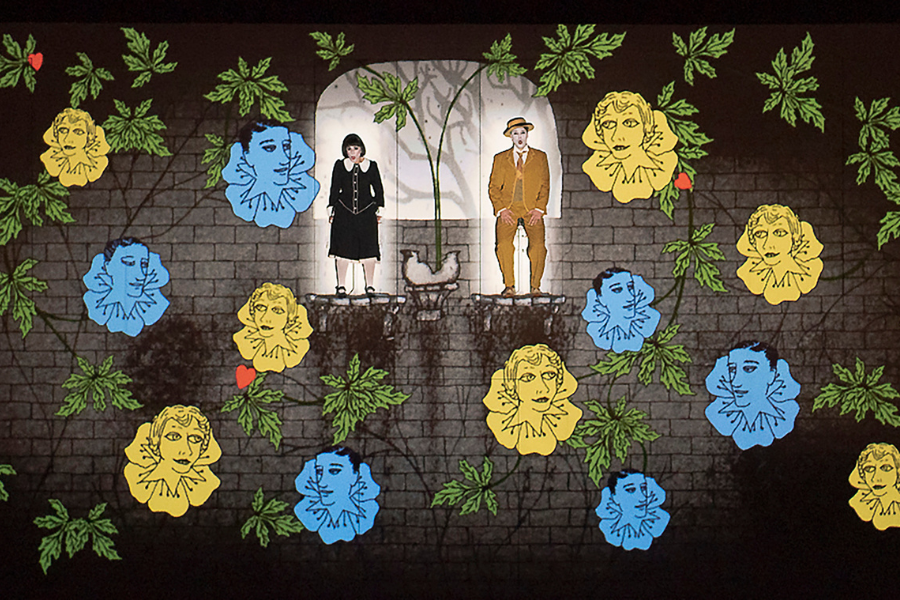Teatro Colón de Buenos Aires: Hogar de fanáticos

Considerado como uno de los teatros más importantes del mundo por su arquitectura, acústica y las constelaciones que han pasado por su escenario, el Teatro Colón de Buenos Aires tiene tantas anécdotas como canchas de fútbol tiene la Argentina. En sus instalaciones, además de cuerpos artísticos como la Orquesta, el Ballet y Coro Estable y la Orquesta Filarmónica de Buenos Aires, se junta un especial tipo de público, fanático en extremo, enamorado, adicto y nostálgico.
Por Álvaro Molina R.
Foto de portada: Juan Bruzza
“Fue amor a primera vista”, dice Luis, argentino de alrededor de 60 años, quien conoció el Teatro Colón de Buenos Aires por primera vez a los 27, cuando su cuñado de ese entonces, un devoto fanático de la ópera, le preguntó si quería acompañarlo. La función era una Carmen acerca de la que no sabía casi nada de los cantantes ni de la producción. Antes de asistir, pensaba que las óperas eran un espectáculo que “empezaba a las cinco de la tarde y terminaba a la medianoche”. La música no había jugado un rol importante en su vida. Convencido por otro entusiasta, decidió ir.
Luego de entrar por “la puerta de atrás”, como se conoce el ingreso por la cara oeste del Teatro Colón, aquella que está sobre Avenida Libertad, ese “amor a primera vista” fue, también, un amor correspondido. Un amor al sonido de la sala principal, al tamaño del escenario, a la cúpula con pinturas de Raúl Soldi, al foso de la orquesta con su capacidad para más de 120 músicos, a sus más de 2 mil butacas. ¿Y la música? Se convirtió en una obsesión.
El testimonio de Luis es parte de los que el sociólogo argentino Claudio Benzecry recoge en su libro El fanático de la ópera (Siglo XXI, 2012), un recuento de diferentes voces de públicos que han conocido el Teatro Colón en distintos momentos de su vida, pero que confluyen en una sola cosa: una obsesión y una asistencia al teatro más importante de Argentina motivada por un amor que, a ratos, deriva en una adicción o un peregrinaje, como el que tuve la oportunidad de hacer a mediados de mayo de 2023 para ver La flauta mágica, la primera ópera a la que asistí cuando niño, a los 7 años. Ahora, sería mi primera ópera en el Colón.
Hablar del Teatro Colón, más allá de su arquitectura, majestuosidad patrimonial y colección de grandes estrellas, es también hablar de quienes asisten y descubren ahí un especial entusiasmo por la ópera, tan característico como la emoción que transmite un superclásico de fútbol, un concierto de rock nacional o un asado con amigos y familiares. Es un fanatismo de apego, compromiso y consumo que parece ser eterno, tanto como los homenajes a Maradona o, al menos, que puede llegar a ser incluso más ancho que la 9 de julio.
Un espectáculo paralelo
Desde su inauguración en 1908 con la presentación de Aida, el Teatro Colón ha brindado abultadas temporadas de ópera, en las que se programan los infaltables clásicos –La bohème, por ejemplo, se ha presentado más de 50 veces- y, también, óperas de vanguardia para los fanáticos más avezados como Die Soldaten de Zimmermann y Einstein on the Beach de Glass, ejemplos recientes de producciones que desafían gustos y preferencias.
Un espectáculo paralelo a las óperas, ballet y conciertos, son los públicos que asisten al teatro. En su libro Palco, cazuela y paraíso (Editorial Sudamericana, 2002), la periodista musical argentina Margarita Pollini explica: “El maravilloso espectáculo que brindan los asistentes guarda una extraordinaria riqueza. En el marco de esa escenografía ‘áurea y rosa’ conviven personajes tan diversos como bien delineados: el conocedor, el neófito, el fanático, el crítico, el esnob, el apasionado, el rico y el pobre. La constante renovación del elenco hace que cada época tenga sus características, pero el argumento de esta obra no se ha modificado mucho a través de los años”.
El argumento de esa obra que menciona Pollini se inicia en la primera vida que tuvo el Colón entre 1857 y 1888, año en que el teatro cerró para la construcción de una nueva sala que reemplazara a la original, ubicada originalmente en la Plaza de Mayo. Fueron más de 20 años los que tardó la obra del nuevo recinto, encargada al tridente de arquitectos Julio Dormal (belga), Francisco Tamburini y Víctor Meano (italianos, estos últimos).
Argentina atravesaba una era de modernización propia de las naciones latinoamericanas en la segunda mitad del siglo XIX, en medio del auge de la sociabilidad burguesa empeñada en una misión civilizatoria que se reflejó en otros edificios y emplazamientos porteños diseñados por la misma tríada de arquitectos: el Parque Tres de Febrero de Palermo, el mausoleo del general San Martín y la sede central de la Sociedad Rural.
Luego de un proceso plagado de obstáculos -que incluyó el repentino fallecimiento de Tamburini en 1899 y de su discípulo Meano en 1904- Dormal se encargó de la etapa final de construcción, que concluyó definitivamente con la apertura en 1908. El teatro estaba listo para recibir a los públicos y, bajo la administración del gobierno municipal, representar al país en su conjunto.
Como suele ocurrir con los públicos del Colón, su fama es de “implacable”, “temido”, “amado”, “respetado” o “criticado”. Ya sea que te sientes en medio de la platea, en la comodidad de un palco o en lo más alto de paraíso, quienes asisten al teatro llenan de citas y anécdotas.
En su primer año, al Colón asistieron quienes representan la vieja historia de estratificación, contada en muchos teatros de Latinoamérica: acomodados terratenientes, empresarios comerciantes e industriales, políticos y burócratas, diplomáticos e invitados. Esta imagen de altos ejecutivos y aristócratas no era la única, sin embargo.
Según Benzecry, las clases populares, desde hace tiempo, “también fueron parte de la audiencia”; ahí en las ubicaciones más altas se encontraban las nacientes clases medias del siglo XX, además de los inmigrantes italianos pobres, “quienes entendían la ópera como parte de la cultura popular” y “compartían con la elite la tendencia a atribuir un carácter sagrado a la ópera”.
Los públicos más “invisibles”, que no atiborran los palcos, compran el Gran Abono ni usan los pasillos del Teatro Colón como pasarela para desfilar sus vestidos y joyas, optan por las localidades de tertulia, cazuela y paraíso, más económicas y de a pie. Margarita Pollini las describe como “el punto de reunión de los verdaderos conocedores y apasionados por la ópera, contra la reputación de esnobs que se reserva a los de la platea”.
Como suele ocurrir con los públicos del Teatro Colón, su fama es de “implacable”, “temido”, “amado”, “respetado” o “criticado”. Ya sea que te sientes en medio de la platea, en la comodidad de un palco o en lo más alto de paraíso, quienes asisten al teatro llenan de citas y anécdotas, como la que relata Pollini:
En el estreno de la Aida de 1962, que se llevó a cabo dentro del Abono Vespertino, cantaba el Radamés un uruguayo, José Soler, que había sido un buen tenor, pero que ya no lo era. Soler no sólo tuvo que ser reemplazado por James Mc Cracken después de una función, sino que su escasa altura y presencia suscitaron las bromas del auditorio. Al verlo aparecer en la escena triunfal, de a pie y con tan poco gracejo, se levantó, implacable, una voz desde la tertulia:
—¡Che, Radamés! ¿Perdiste el colectivo?
Tertulia y cazuela en el paraíso
Antes de cualquier función, las puertas al vestíbulo del Teatro Colón abren al menos una hora antes de que comience la función. Mientras, se puede recorrer el foyer y mirar su cúpula octogonal de cristal o subir las escalinatas de mármol de Carrara, comprar un regalo en la tienda del teatro o tomar café y comer pasteles o sándwiches en la cafetería.
Hay un ritual, sin embargo, para entrar a los sectores más altos, cuyos accesos están en el sector peatonal de las calles Viamonte (por el lado norte) y Tucumán (por el lado sur). Dependiendo de la ópera, los asistentes empiezan a juntarse varios minutos, incluso más de una hora antes de que abran las puertas para conseguir la mejor visión posible de pie.
A mediados de mayo de 2023, para una función de La flauta mágica, en la entrada por calle Tucumán ya se podía encontrar gente esperando con más de una hora de anticipación. Había madres con sus hijas comentando una telenovela de moda, familias completas intentando que los más pequeños no corrieran por la calle, jóvenes curiosos que venían después de haber terminado clases en la universidad y hablaban de teoría musical y partituras.
Se me acercó un tipo, preguntando a qué hora abrían. “No lo sé, es mi primera vez, pero debería ser pronto”, le respondí, tratando de adivinar la hora en el reloj. Él venía desde Rosario y también era su primera vez. Debía de tener alrededor de unos 50 años y no estaba acompañado. “Es que es un placer venir solo”, me dijo. Era otro fanático, uno que había atravesado los 300 kilómetros que separan Rosario de Buenos Aires para ir a ver una de las últimas óperas de Mozart.
Había más fanatismo a la espera por la “puerta de atrás”, la que mira a la avenida Libertad y a la plaza Lavalle. Ahí, gente de todas las edades se sacaba fotos en las escaleras o bajo la característica marquesina, con sus adornos fabricados por el taller de fundición Zamboni especialmente para el Centenario de Argentina. Otros, muy elegantemente vestidos, esperaban a sus acompañantes o miraban el programa de sala, comentando -algunos criticando- la audaz escenificación propuesta por la Ópera Cómica de Berlín, inspirada en el cine negro y el expresionismo alemán.
Son dos caras de distintos sectores, pero que comparten la pasión, una relación semi sagrada entre música y expectativas personales. En El fanático de la ópera, Benzecry describe el siguiente episodio:
Una puesta de El barbero de Sevilla presentaba a un hippie cantando el aria “Pace e gioia” (Paz y alegría), un baile disco, un primer acto inspirado en West Side Story y fragmentos de la popular canción italiana “Volare”. AL comienzo del segundo acto, cuando la gente ya sabía lo que inevitablemente iba a ocurrir, alguien desde el piso superior gritó “Traigan de nuevo al verdadero Rossini. Esto es un escándalo”.
Otras anécdotas incluyen al público dividiéndose en bandos; mientras uno aplaude, el otro abuchea aún más fuerte. O el casi inicio de una pelea a raíz de la moderna puesta en escena de El holandés errante, diseñada por el pintor argentino Guillermo Kuitca. En cualquier caso, son fanatismos que remecen y apasionan, como cuando el jugador de tu equipo de fútbol está haciendo el ridículo en la cancha o cuando tu banda favorita no toca esa canción por la que fuiste a verlos al concierto.
El eterno regreso
Muchos de quienes hemos pisado el Teatro Colón de Buenos Aires podrán dar cuenta del amor a primera vista que sintió Luis cuando fue por primera vez, a los 27 años. Que es uno de los mejores teatros del mundo, que es una de las joyas entregadas por los arquitectos Tamburini, Meano y Dormal a la “París de Sudamérica”, que muchos de los grandes artistas de la historia han estado presentes ahí, que su público es de los más exigentes y que en su sala, escenario y accesos se congregan “héroes, peregrinos, adictos y nostálgicos”, como señala Benzecry.
El teatro es, al final, donde conviven todos estos públicos. Algunos forman sus propias redes, se ponen en contacto para asistir a funciones de ópera fuera del circuito del Colón o salen enfurecidos con la escenografía luego de una función.
Un día, mientras visitaba el Colón Fábrica, el espacio donde se exhiben algunas de las producciones confeccionadas en los talleres del teatro, conversé con una de las guías que conducía el recorrido. Hablamos de las óperas y espectáculos que se hacían en ese espacio, un galpón gigantesco en pleno barrio de La Boca. Por lo general, se programan las de vanguardia y contemporáneas, como Sun & Sea, una instalación-performance que recrea un día de playa y reta los gustos de públicos más tradicionales.
Le pregunté a la guía acerca de Einstein on the Beach, que tendría su estreno en Latinoamérica durante junio. “¡Me tiene muy entusiasmada!”, me respondió, con un fanatismo que le sacudía el cuerpo. “Sé que a muchos de quienes van regularmente al Colón probablemente no les gustará”, agregó, “pero a pesar de eso, vuelven siempre al teatro. Es como una adicción”.










